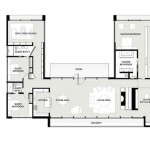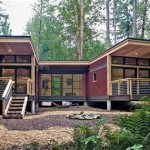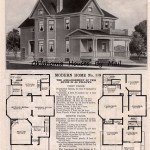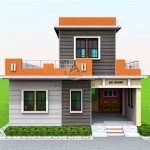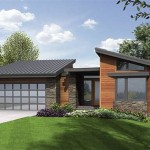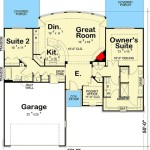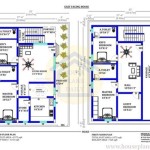3 Bedroom House Plans: Designing Your Dream Homestays Community Plan
The concept of community-based homestays is gaining significant traction in the tourism and real estate sectors. It offers a uniqueblend of sustainable tourism, cultural immersion, and economic development for local communities. At the heart of a successful homestays community plan lies the design of its residential units, particularly the three-bedroom house plan, which strikes a balance between accommodating visiting guests and providing comfortable living spaces for host families. Careful planning and consideration are crucial to ensure these homes are not only functional and aesthetically pleasing, but also contribute to the overall appeal and sustainability of the homestays community.
Designing a three-bedroom house plan for a homestays community requires a multifaceted approach. It demands a deep understanding of the target audience, the local environment, the community's culture, and the principles of sustainable design. The primary objective is to create homes that are welcoming to guests, respectful of the local culture, and environmentally responsible. This involves careful consideration of spatial layouts, material selection, energy efficiency, and water conservation. A well-designed three-bedroom house plan can significantly enhance the appeal of the homestays community, attract more visitors, and contribute to the economic well-being of the host families.
Understanding the Needs of Host Families and Guests
The first step in designing a three-bedroom house plan for a homestays community is to understand the needs of both the host families and the visiting guests. Host families require comfortable and private living spaces that allow them to maintain their daily routines while welcoming guests into their homes. Guests, on the other hand, need comfortable and convenient accommodations that provide a sense of privacy and security. The design should incorporate separate living areas for the host family and the guests, such as distinct entrances, living rooms, or kitchens. This allows for flexibility and privacy for both parties. It is also essential to consider the number of guests that can be comfortably accommodated in the house, taking into account factors such as room sizes, bathroom facilities, and common areas.
Furthermore, the design should incorporate elements that promote interaction and cultural exchange between the host families and guests. This could include shared outdoor spaces, such as patios or gardens, where they can socialize and learn about each other's cultures. It could also involve incorporating elements of local architecture and design into the house, such as traditional building materials or decorative motifs, to create a sense of place and authenticity. It is also important to consider the accessibility needs of both host families and guests. The design should incorporate features that make the house accessible to people with disabilities, such as ramps, wider doorways, and accessible bathrooms.
Analyzing the operational aspect of a homestay is vital at this stage. For instance, consider the ease of cleaning and maintenance of the guest areas. Durable, low-maintenance materials are preferable to minimize the burden on the host family. Soundproofing between guest rooms and the host family's private areas can also enhance the experience for everyone. Also, the layout should be designed to allow hosts to provide meals or other services to guests easily, if desired. This includes efficient kitchen design and convenient access to dining areas.
Optimizing Space and Functionality in a Sustainable Manner
Optimizing space and functionality is crucial in a three-bedroom house plan designed for a homestays community. The design should make efficient use of available space, creating a comfortable and functional living environment for both the host family and the guests. This involves careful consideration of room sizes, layouts, and storage solutions. Multi-functional spaces can be incorporated, such as a living room that can be converted into a guest bedroom or a dining room that can be used for both meals and work. Built-in storage solutions, such as closets and cabinets, can help maximize space and minimize clutter.
Sustainability is an integral part of modern design and should be incorporated into every aspect of the three-bedroom house plan. This includes using sustainable building materials, such as reclaimed wood, bamboo, or recycled concrete, which can reduce the environmental impact of the construction process. It also involves incorporating energy-efficient features, such as solar panels, energy-efficient windows, and insulation, which can reduce energy consumption and lower utility bills. Water conservation measures, such as low-flow toilets and showerheads, can also be implemented to conserve water resources.
Proper orientation of the house is critical for passive heating and cooling. Designing the house to take advantage of natural sunlight and ventilation can minimize the need for artificial heating and cooling, reducing energy consumption. Landscaping plays a significant role in sustainability. Planting native trees and shrubs can provide shade, reduce soil erosion, and create a habitat for local wildlife. Rainwater harvesting systems can also be installed to collect rainwater for irrigation and other non-potable uses.
Integrating Local Culture and Architectural Styles
Integrating local culture and architectural styles is essential for creating a homestays community that is authentic and appealing to visitors. The design of the three-bedroom house plan should reflect the local culture and architectural traditions, using local materials, colors, and design motifs. This creates a sense of place and authenticity, making the homestays community more attractive to visitors who are seeking a cultural experience. It also helps to support local artisans and craftspeople, contributing to the economic development of the community. Incorporating local art and crafts into the interior design of the house can further enhance the cultural experience for guests.
The architectural style of the house should be consistent with the surrounding environment and the existing buildings in the community. Avoid introducing architectural styles that are out of place or clash with the local landscape. Instead, aim to create a harmonious blend of modern design and traditional architecture, incorporating elements of local building techniques and materials. This could involve using traditional roofing materials, such as thatch or clay tiles, or incorporating local architectural features, such as verandas or courtyards.
Community consultation is vital throughout the design process. Engaging with local residents, community leaders, and cultural experts helps to ensure that the design is culturally sensitive, and that it meets the needs and expectations of the community. This could involve conducting surveys, hosting community meetings, and working with local artisans and craftspeople. A collaborative approach to design will ensure that the three-bedroom house plan is not only functional and aesthetically pleasing, but also culturally appropriate and contributes to the overall sustainability of the homestays community.
Landscaping should also incorporate local flora, further integrating the homes into the surrounding environment. Native plants require less maintenance and water, contributing to the sustainability of the homestays community. The overall design should aim to create a welcoming and inclusive environment that celebrates the local culture and provides a unique and memorable experience for visitors.
Beyond the physical structure, consider the cultural significance of certain spaces. For example, some cultures may have specific requirements for kitchen layouts or designated prayer areas. These cultural nuances should be respected and incorporated into the design to ensure the houses are culturally sensitive and comfortable for both hosts and guests.
By carefully considering the needs of host families and guests, optimizing space and functionality in a sustainable manner, and integrating local culture and architectural styles, it is possible to design a three-bedroom house plan that contributes to the success of a homestays community. This involves a holistic approach that balances functionality, aesthetics, sustainability, and cultural sensitivity. A well-designed three-bedroom house plan can enhance the appeal of the homestays community, attract more visitors, and contribute to the economic well-being of the host families, creating a win-win situation for all stakeholders.

3 Bedroom Container Home Designs With 2 Bathroom Family House Prefab Made In China Com

3 Bedroom Container Modular House For Living Shipping Homes Prefab Made In China Com

Simple 5 Lakh Budget House Plans 2025

Simple 5 Lakh Budget House Plans 2025

The Viv 6 Bedroom Contemporary House Plan David Chola Architect

House Plan

A Guide To Homestay Design Plans And Ideas Homestayinfo Com

Create Professional 2d And 3d Floor Plans Roomsketcher

Classic Modern 3 Bedroom House Design 23m X 16m

Simple 5 Lakh Budget House Plans 2025
Related Posts

